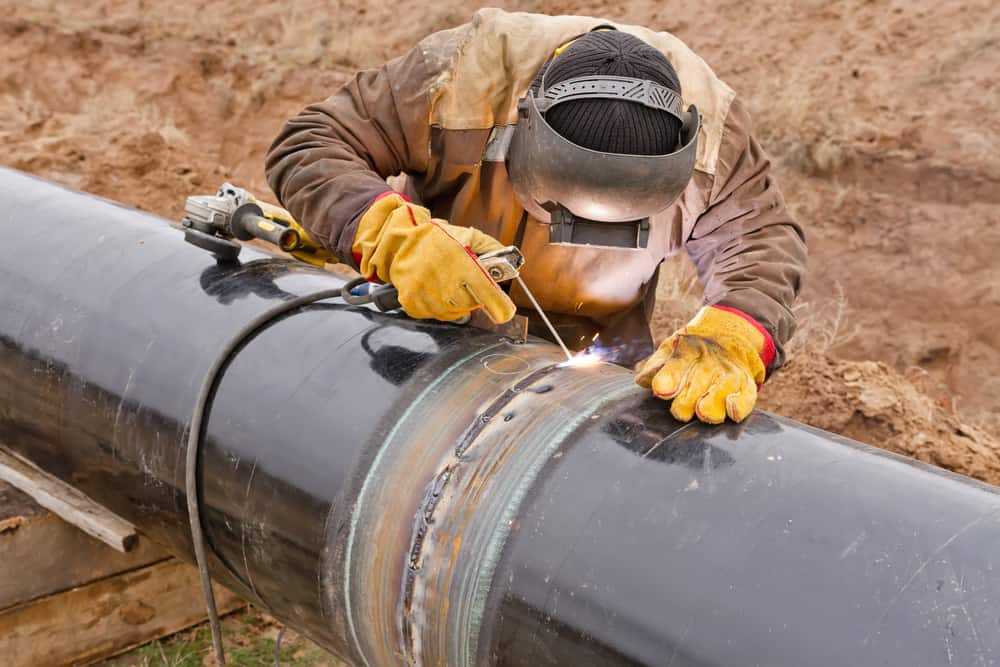Expert Pipeline Welding Inspection Solutions: Guaranteeing Safety And Security and Compliance
Expert Pipeline Welding Inspection Solutions: Guaranteeing Safety And Security and Compliance
Blog Article
Comprehensive Review of Pipeline Welding Inspection Treatments
Pipe welding evaluation treatments play a critical role in guaranteeing that welded connections satisfy rigorous sector criteria and specs. From meticulous pre-welding evaluations to extensive post-weld analyses, a distinct inspection process is important for maintaining the architectural stability of pipes.
Pre-welding Examination Preparations
Prior to beginning the welding process, thorough pre-welding examination prep work are vital to make certain the stability and quality of the weld joint. These prep work entail a precise examination of the products to be welded, the welding equipment, and the job atmosphere. By conducting thorough pre-welding assessment preparations, potential concerns can be identified and dealt with early on, leading to trustworthy and premium weld joints.
Welding Procedure Qualification
Detailed pre-welding assessment preparations lay the structure for the critical process of Welding Procedure Qualification, making sure the stability and high quality of the weld joint. Welding Procedure Credentials (WPQ) is an important action in the welding process that entails screening and accrediting welding treatments to ensure they fulfill specific standards and needs. The WPQ process commonly includes welding treatment requirements development, welding procedure credentials testing, and paperwork of the outcomes.
Throughout welding procedure spec growth, essential details such as the welding procedure, welding products, joint design, and welding parameters are specified to develop a comprehensive procedure. Consequently, welding procedure certification screening is performed to validate the proposed procedure's stability. This screening frequently includes welding examination promo codes that are subjected to numerous mechanical and non-destructive tests to evaluate the weld's quality and adherence to the defined criteria.
In-process Weld Assessment
Throughout the welding process, in-process weld evaluation plays a vital duty in ensuring the high quality and stability of the weld joint - Pipeline Welding Inspection. This kind of inspection includes monitoring the welding specifications, examining the weld bead development, and detecting any kind of possible defects or stoppages as they occur. By carrying out in-process weld evaluations, welding drivers can without delay attend to any kind of issues that might occur, consequently stopping further flaws and making certain that the final weld satisfies the needed requirements
Common methods made use of for in-process weld assessment include aesthetic assessment, liquid penetrant testing, magnetic particle screening, ultrasonic screening, and radiographic testing. Visual evaluation is typically the very first step at the same time, allowing assessors to visually assess the weld for surface area irregularities such as splits, porosity, or incomplete blend. A lot more advanced approaches like ultrasonic testing and radiographic screening offer detailed understandings into the interior structure of the weld, making certain that there are no covert issues that might endanger the weld joint's strength and honesty. Overall, in-process weld assessment is important for keeping the quality and dependability of welded pipelines.
Non-destructive Screening (NDT)
Non-destructive Screening (NDT) is a vital approach employed in pipeline welding evaluation to examine the honesty of weld joints without causing damage to the bonded framework. By making use of numerous NDT techniques, assessors can assess the quality of welds and identify any type of defects or stoppages that might compromise the structural stability of the pipeline. Typical NDT techniques utilized in pipe welding examination consist of Radiographic Screening (RT), Ultrasonic Screening (UT), Magnetic Fragment Examining (MPT), Fluid Penetrant Screening (LPT), and Visual Screening (VT)
RT entails making use of X-rays or gamma rays to generate pictures of the inner framework of the weld, permitting assessors to identify issues such as porosity, splits, or insufficient blend. UT makes use of high-frequency acoustic waves to find problems underneath the surface of the weld, providing comprehensive information about the dimension and area of issues. MPT and LPT are made use of to identify surface-breaking issues by using magnetic bits or penetrant liquids to the weld location. Furthermore, VT involves aesthetic examination of welds to determine any type of visible blemishes.
Post-weld Assessment and Documentation


Documentation of post-weld assessment findings is crucial for preserving quality control records and ensuring compliance with sector standards and laws. Comprehensive records must include info concerning the evaluation approaches used, the place and nature of any kind of problems located, and any restorative activities taken - Pipeline Welding Inspection. Proper paperwork not just functions as a record of the weld's high quality yet also aids in future maintenance and assessment processes
Final Thought

In final thought, pipe informative post welding examination treatments play a crucial role in ensuring the quality and integrity of welds. On the whole, adherence to proper evaluation procedures is essential to the success of pipeline welding jobs.
From precise pre-welding assessments to extensive post-weld evaluations, a well-defined evaluation process is essential for maintaining the architectural sturdiness of pipes. By carrying out in-process weld evaluations, welding operators can promptly resolve any kind of problems that may arise, thereby protecting against more flaws and guaranteeing that the final weld fulfills the needed specifications.
Usual techniques used for in-process weld inspection consist of visual examination, fluid penetrant testing, magnetic fragment testing, ultrasonic screening, and radiographic testing.Non-destructive Screening (NDT) is an important technique used in pipeline welding inspection to assess the integrity of weld joints without triggering damages to the right here welded framework. Post-weld examination includes different techniques to examine the welds for flaws, including visual examination, dye penetrant screening, magnetic bit screening, ultrasonic testing, and radiographic screening.
Report this page